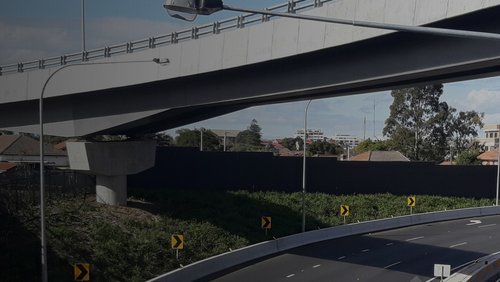8 Sep 2020
MBIE is asking for feedback on two frameworks, which will shape the Building for Climate Change Programme.
The Whole of Life Embodied Carbon Emissions Framework looks at reducing embodied carbon emissions across a building’s whole life cycle – from the production of building materials, all the way through to what happens to the building when it’s at the end of its life.
The Transforming Operational Efficiency Framework focusses on reducing carbons emissions related to the operation of buildings, such as the use of heating, cooling, lighting, ventilation, and other similar items.
MBIE is keen to hear from engineers and those in the building and construction sector who will be directly impacted by changes. They want to understand your views and learn from your experience.
The Building for Climate Change Programme will guide changes in the sector over the next 20-30 years, with some initial changes expected to be rolled out next year.
How to make a submission
The consultation on the two frameworks is open between 31 August–11 October. Submissions can be made through the survey on MBIE’s website or by emailing BfCC@mbie.govt.nz.
We will also be submitting. Please send your feedback to hello@engineeringnz.org so we can capture your thoughts in our submission.
Read more about the Building for Climate Change Programme
Read the Whole of Life Embodied Carbon Emissions Framework
Read the Transforming Operational Efficiency Framework
Carbon emissions from buildings must reduce if New Zealand to reach the 2050 goal
New Zealand has a goal of being carbon neutral by 2050. Currently, the construction sector produces 20% of New Zealand’s carbon emissions. The Building for Climate Change Programme has been set-up to reduce greenhouse gas emissions during the construction of buildings, and throughout their operational life.
Embodied carbon includes the extraction and manufacture of raw building materials and their transport to site, maintenance of the building during its life and demolition and disposal or recycling of materials at the end of the building’s life. Operational carbon includes all energy use required to operate, work or live in the building. Heating, lighting, the treatment, transport and use of water are all contributors. Buildings use slightly more than half of the electricity produced in New Zealand.
The two frameworks produced by the Building for Climate Change Programme outline a vision for sustainably constructed, energy-efficient homes that are healthy to live in. Currently, New Zealand does not have standards for either embodied or operational carbon over the lifetime of a building.
The frameworks propose putting in place caps for operational emissions and water use and establishing indoor environmental quality parameters for all new buildings. Reduction of embodied carbon is to be achieved by maximising the efficiency of new builds, designing and constructing buildings to last, reducing the need for replacement, and by selecting low-carbon materials for construction.
Changing our approach to building
The Building for Climate Change programme aims to bring about a shift in thinking, whereby energy efficiency, carbon emissions, and a healthy living environment are key considerations of any new build and renovations or changes to existing builds. In New Zealand, operational efficiency is not a core subject area for those training to work in the building and construction sector. It exists as an elective for those who wish to pursue it. This must change.
Architects, engineers, builders and home and business owners are being encouraged to design and to ask for energy-efficient and low embodied carbon building options to be part of any project they are involved with. Minister for Building and Construction, Jenny Salesa, has stated there will be targets and incentives to “encourage people to think innovatively about the construction, design and operation of buildings.” But to meet the goals will take more than encouragement. Changes will need to be made to both the Building Act and the Building Code.
Minimum requirements set
The first Building for Climate Change initiatives is expected to be consulted on in early 2021. These include expanded insulation and glazing requirements for new homes. To bring the greatest benefits, these requirements will need to be implemented alongside outcomes-based targets such as acceptable ranges for temperature and humidity.
Setting outcomes-based targets will encourage innovation and problem solving, rather than the installation of minimum requirements regardless of whether or not these measures have a material impact on the living environment of our buildings. If we are serious about making our buildings healthy places to live and work, we must shift our thinking to focus on the outcomes we want to achieve.
Balancing the upfront costs with long-term benefits
The new standards will first apply to new builds, but there is also a pressing need to remediate existing builds. The question at the top of people’s minds is ‘what's this going to cost?’ Can new builds meet the standards without pushing up the cost of construction? What burden will be placed on owners faced with remediating their existing buildings?
Upfront costs may seem daunting, but there is a lot at stake. Each year in New Zealand around 80,000 people are admitted to hospital as a result of illness directly related to cold, damp and mouldy housing. And there are other implications as well. Getting things wrong can be costly, as we saw with the leaky building saga. As our climate changes, we must ensure our buildings can perform well in future conditions such as increased temperatures, higher rainfall and a higher frequency of extreme weather events.
As well as being healthier to live in, energy-efficient buildings will deliver operational cost savings over the life of the building. Can we build smarter and more efficiently to offset the upfront costs of constructing or upgrading buildings to meet higher standards?
The Building for Climate Change Programme is designed to be implemented over the next couple of decades. What are the best ways to get to where we need to be and to support sector professionals and building owners through the changes?



